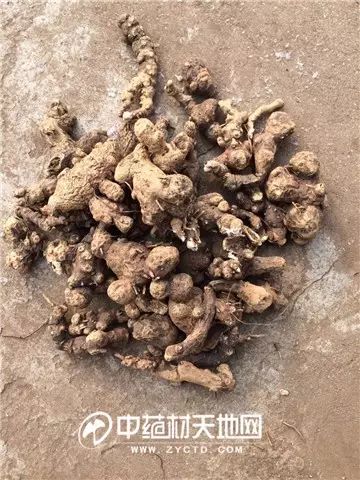Recently, Bei Cang Zhu (Atractylodes macrocephala) has entered the mid-to-late stage of production and procurement. Reports from Weichang County in Chengde City, Hebei Province indicate a noticeable increase in local merchants seeking high-quality products with red mercury spots, with prices remaining firm, although buyers are clearly suppressing the market. Given the dwindling wild resources and the poor quality of cultivated varieties, what does the future hold for Bei Cang Zhu? Let’s take a look at this analysis article personally written by Ling Tong Mei:
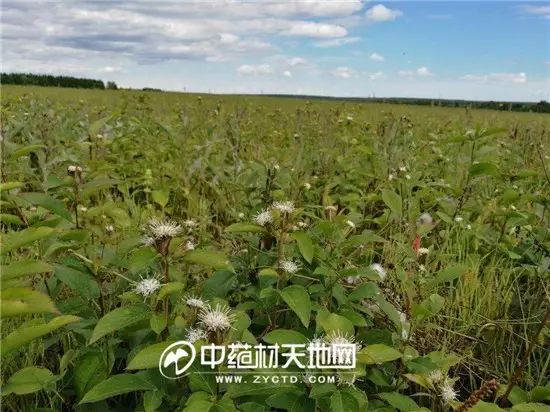 Figure 1: The planting base of Bei Cang Zhu in Fengcheng County, Liaoning.
Figure 1: The planting base of Bei Cang Zhu in Fengcheng County, Liaoning.
1. First, we must understand the differences between Bei Cang Zhu and other types of Cang Zhu
Cang Zhu is a traditional Chinese medicinal material widely sourced from wild resources across the country. Different regions classify Cang Zhu into various categories, generally divided into Bei Cang Zhu, Mao Cang Zhu, and Guan Cang Zhu. Currently, the Pharmacopoeia includes Mao Cang Zhu or Bei Cang Zhu. Below are the specific situations of each variety of Cang Zhu:
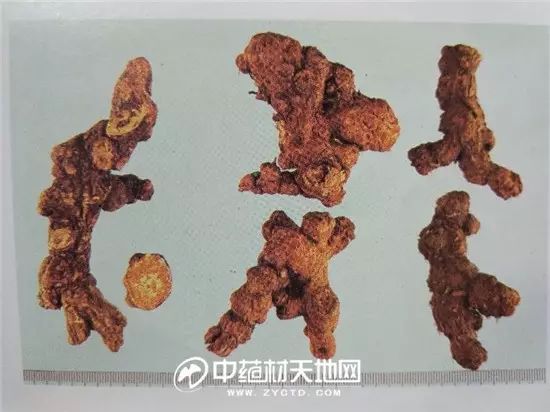 Figure 2: Left is Mao Cang Zhu, middle is Bei Cang Zhu, right is Guan Cang Zhu.
Figure 2: Left is Mao Cang Zhu, middle is Bei Cang Zhu, right is Guan Cang Zhu.
1.1 Bei Cang Zhu (also known as Jin Cang Zhu, Hai Cang Zhu)
Currently, the Cang Zhu seen in the market is primarily Bei Cang Zhu, which has a looser texture, a brownish-yellow oil spot on the fracture surface, and offers good cost-performance, making it the most popular in the market.
Bei Cang Zhu is distributed in regions north of the Qinling Mountains, including Hebei, Shanxi, Inner Mongolia, Liaoning, Jilin, Heilongjiang, Shaanxi, and Gansu, with the best quality coming from Chengde, Hebei. Recently, there has been a noticeable increase in merchants seeking products from Chengde, with local businesses scrambling for stock. The price for common goods is around 70-72 yuan (per kilogram), while high-quality Cang Zhu with light skin can reach prices of 80-84 yuan.
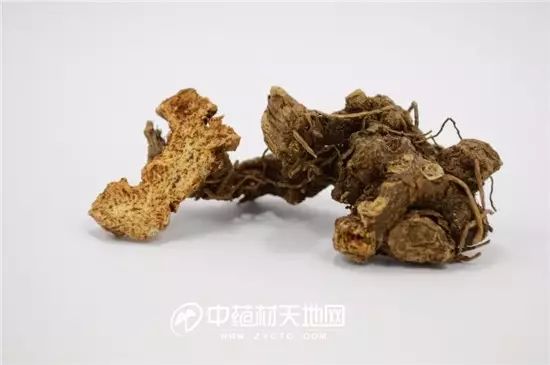 Figure 3: Genuine Bei Cang Zhu, with a brownish-yellow fracture surface.
Figure 3: Genuine Bei Cang Zhu, with a brownish-yellow fracture surface.
1.2 Mao Cang Zhu (also known as Han Cang Zhu, Nan Cang Zhu)
Mao Cang Zhu is primarily found in wild resources in Hubei, Xuancheng in Anhui, Wuning in Jiangxi, and Hanzhong in Shaanxi. It is commonly believed that Mao Cang Zhu is of higher quality than Bei Cang Zhu. However, wild Mao Cang Zhu is not abundant, and the cost of cultivation is high, making its market price higher than that of Bei Cang Zhu, leading to a lack of competitiveness in the domestic market, with most being exported to Japan.
In terms of identification, Mao Cang Zhu is solid, with an orange-yellow or brown-red oil spot on the fracture surface, commonly referred to as “red mercury spots,” and is priced slightly higher than Bei Cang Zhu.
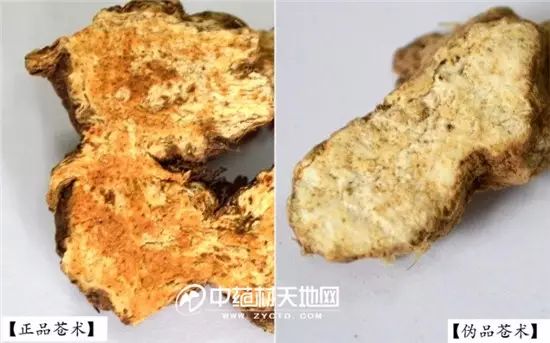 Figure 4: Genuine Cang Zhu with obvious red mercury spots.
Figure 4: Genuine Cang Zhu with obvious red mercury spots.
1.3 Guan Cang Zhu
Guan Cang Zhu is mainly distributed in the northeastern regions of Heilongjiang and most of Jilin, northern Liaoning, and parts of Hohhot in Inner Mongolia. Although Guan Cang Zhu is not included in the current Pharmacopoeia, it is recorded in the pharmacopoeias of Japan and South Korea.
Since the new century, hundreds of tons of Guan Cang Zhu have been exported to Japan and South Korea each year. In terms of identification, Guan Cang Zhu resembles Bei Cang Zhu but lacks red mercury spots, and in the past, it was often mixed with Bei Cang Zhu to be sold as such.
Its price is significantly lower than that of Bei Cang Zhu and Mao Cang Zhu, with common goods priced around 43 yuan, showing a slight increase from earlier.
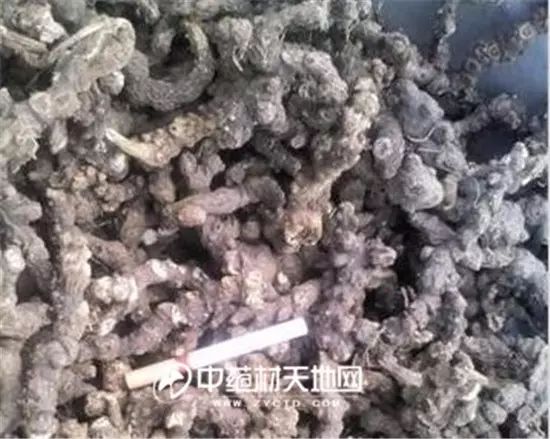 Figure 5: Guan Cang Zhu from Jiamusi, Heilongjiang, without red mercury spots.
Figure 5: Guan Cang Zhu from Jiamusi, Heilongjiang, without red mercury spots.
2. History: The price of the main circulating Bei Cang Zhu has experienced several significant increases
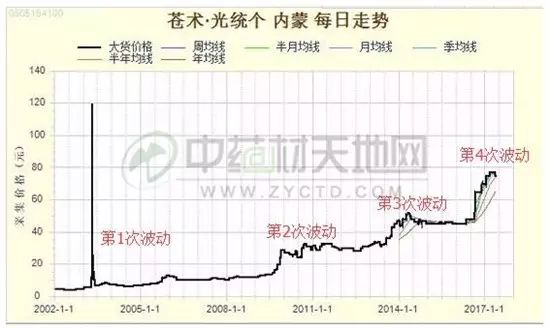 Figure 6: Price trend of Bei Cang Zhu from 2002 to present.
Figure 6: Price trend of Bei Cang Zhu from 2002 to present.
The price trend of Bei Cang Zhu has consistently shown an upward trajectory, as illustrated in Figure 6. Since 2003, its price has undergone four significant fluctuations, with the first peak occurring in April 2003, where it briefly surged to 120 yuan/kg; the second peak occurred in September 2010, with a price of 29 yuan/kg; the third peak occurred in April 2014, with a price of 53 yuan/kg; and the fourth peak occurred in December 2016, with a price of 70 yuan/kg.
The main reasons are: After the outbreak of SARS in 2003, the demand for Bei Cang Zhu surged, leading to a price spike. Starting in 2007, the gap in supply was about 500 tons, which increased to 3500-4000 tons by 2012. The rapid decline of wild Bei Cang Zhu resources and a significant reduction in production led to a sharp increase in prices during the second fluctuation in 2010. The third price fluctuation was caused by the impact of heavy snowfall in spring 2013 and flooding from July to September, which reduced production and significantly decreased inventory.
By late August 2016, the price of Bei Cang Zhu rose again to 52-53 yuan; on August 30, it reached 55 yuan; on September 2, the trading price reached 56 yuan; and by September 22, the price for all goods with full skin had reached 63 yuan.
Aside from these high points, the overall price of Bei Cang Zhu has been in a stable upward phase. But what are the deeper reasons for the steady increase in the price of Bei Cang Zhu?
3. Deep factors affecting the price of Bei Cang Zhu
1. The production areas of Bei Cang Zhu are relatively concentrated, making wild resource harvesting difficult
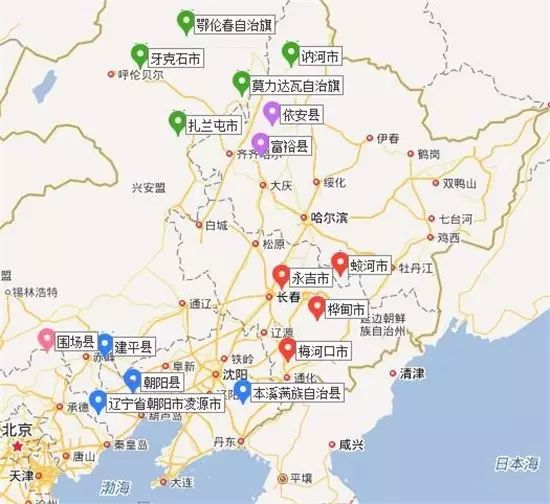 Figure 7: Currently, the main production areas of Bei Cang Zhu in China.
Figure 7: Currently, the main production areas of Bei Cang Zhu in China.
As shown in Figure 7, the main production areas of Bei Cang Zhu are Inner Mongolia, Liaoning, Jilin, Heilongjiang, and Hebei. The production of Bei Cang Zhu in these five regions directly affects its price. Wild Cang Zhu prefers to grow on ridges, making harvesting difficult. As development continues year by year, the quantity is decreasing, leading to increased labor costs, which naturally results in rising prices. In recent years, strict management of grassland protection laws in Inner Mongolia has also restricted the harvesting of Cang Zhu.
 Figure 8: Wild Bei Cang Zhu freshly harvested in late April 2017 from Fengcheng County, Liaoning.
Figure 8: Wild Bei Cang Zhu freshly harvested in late April 2017 from Fengcheng County, Liaoning.
2. The difficulty of cultivating domestically, with no compensatory output yet
Currently, there are relevant enterprises conducting cultivation experiments in Liaoning, Heilongjiang, and Hebei. However, the cultivated Cang Zhu in these areas is still not satisfactory. Depending on the source of seeds, there are products with red mercury spots and those without. Bei Cang Zhu has strict growth conditions; its seeds can only be stored at room temperature for 6 months, and the germination of seeds requires a high temperature, with the optimal temperature being 10-15°C.
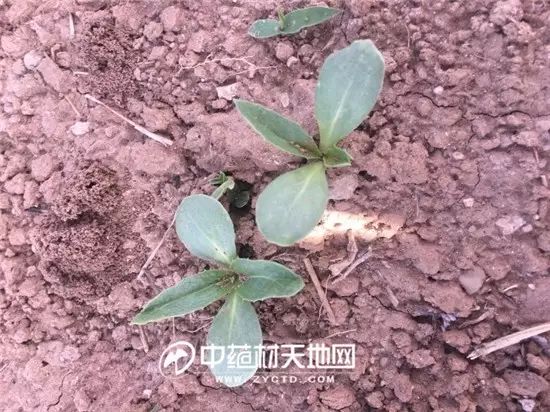 Figure 9: Transplanted seedlings of wild Cang Zhu, although they can survive, have low content in the final product.
Figure 9: Transplanted seedlings of wild Cang Zhu, although they can survive, have low content in the final product.
In northern Liaoning, Jilin, and Heilongjiang, the content of the final product from cultivated Cang Zhu is low, or the source of seeds is simply Guan Cang Zhu. Especially in places like Yichun, the cultivation of Guan Cang Zhu has begun to take shape. However, Bei Cang Zhu has a growth cycle of about 4 years, so it will take another 3-4 years to achieve large-scale output.
3. The increasing demand for Bei Cang Zhu
Since 2003, the production of Chinese patent medicines using Bei Cang Zhu as a raw material has been continuously expanding, leading to an increase in demand for Bei Cang Zhu, such as in products like Pure Yang Zheng Qi Wan, Xiao Er Bai Shou Wan, Er Miao Wan, San Miao Wan, Qu Feng Shu Jin Wan, Mu Xiang Shun Qi Wan, Ping Wei Wan, and Huo Xiang Zheng Qi Shui.
With the growing awareness of healthy eating, the application of Bei Cang Zhu in animal feed and veterinary medicine, as a substitute for chemical veterinary drugs, has also increased, contributing to the rising price of Bei Cang Zhu.
4. Future market: If wild domestication is not vigorously promoted, the price of Cang Zhu will continue to rise
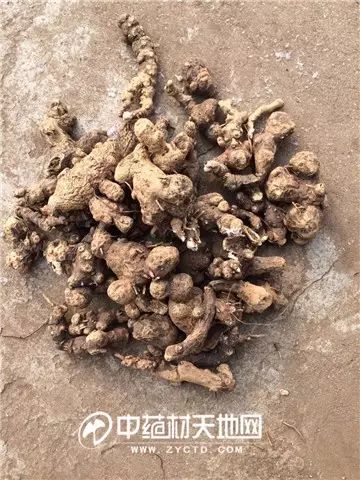 Figure 10: Bei Cang Zhu harvested in Chifeng, Inner Mongolia, this spring.
Figure 10: Bei Cang Zhu harvested in Chifeng, Inner Mongolia, this spring.
Historically, Cang Zhu has primarily come from wild resources, and with the rapid depletion of resources, especially in authentic production areas like Chengde and Fengcheng, the degree of resource shrinkage has become significantly more pronounced.
However, due to the long growth period of cultivated Cang Zhu and its lower content compared to wild Cang Zhu, along with increased costs for land rental and labor management, even if cultivated Bei Cang Zhu is available in three to four years, the price will not be low. Bei Cang Zhu remains a variety with long-term prospects.
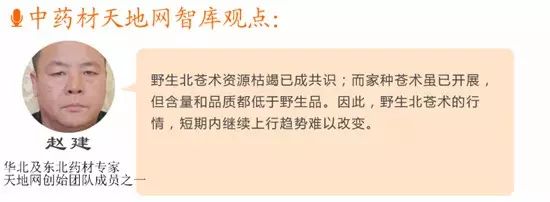
Supply and demand,Check sources
Long press the image below to download the Traditional Chinese Medicine Materials World APP


Check prices / View market trends / Seek supply and demand
Long press the QR code
Quickly follow “Medicine Material Xiao Ling Tong”
Your expert in medicinal materials and business assistant~
www.zyctd.com
Original content from Traditional Chinese Medicine Materials World

Click “Read the original text” to go to the Traditional Chinese Medicine Materials World website to publish supply and demand, view the latest prices, and market information!

